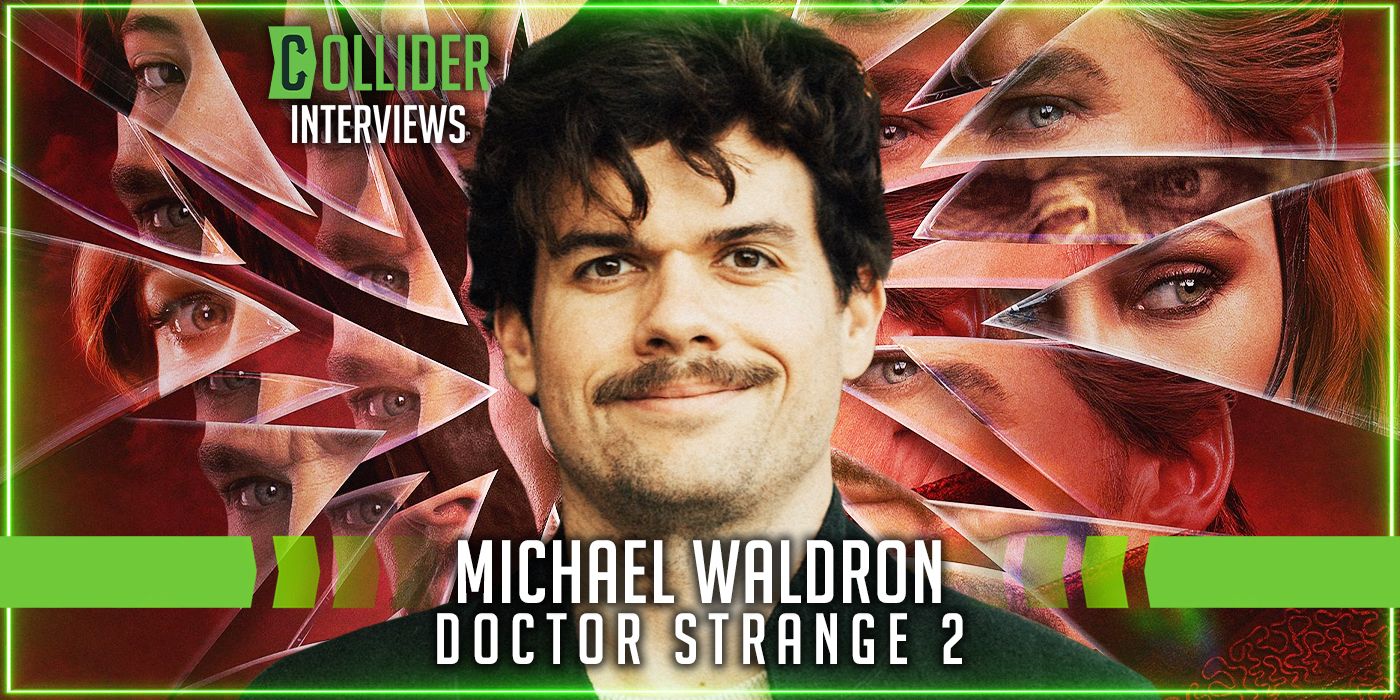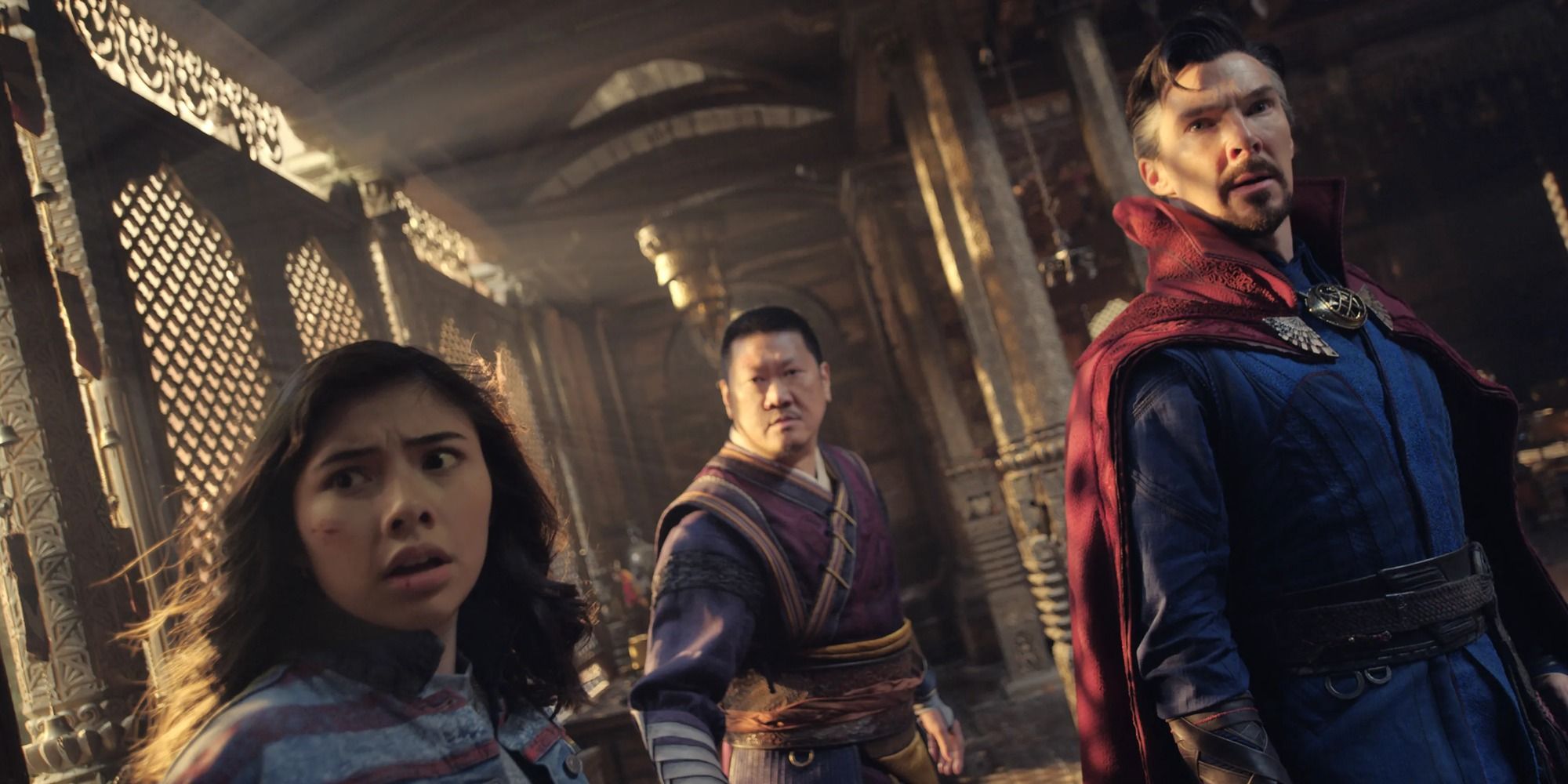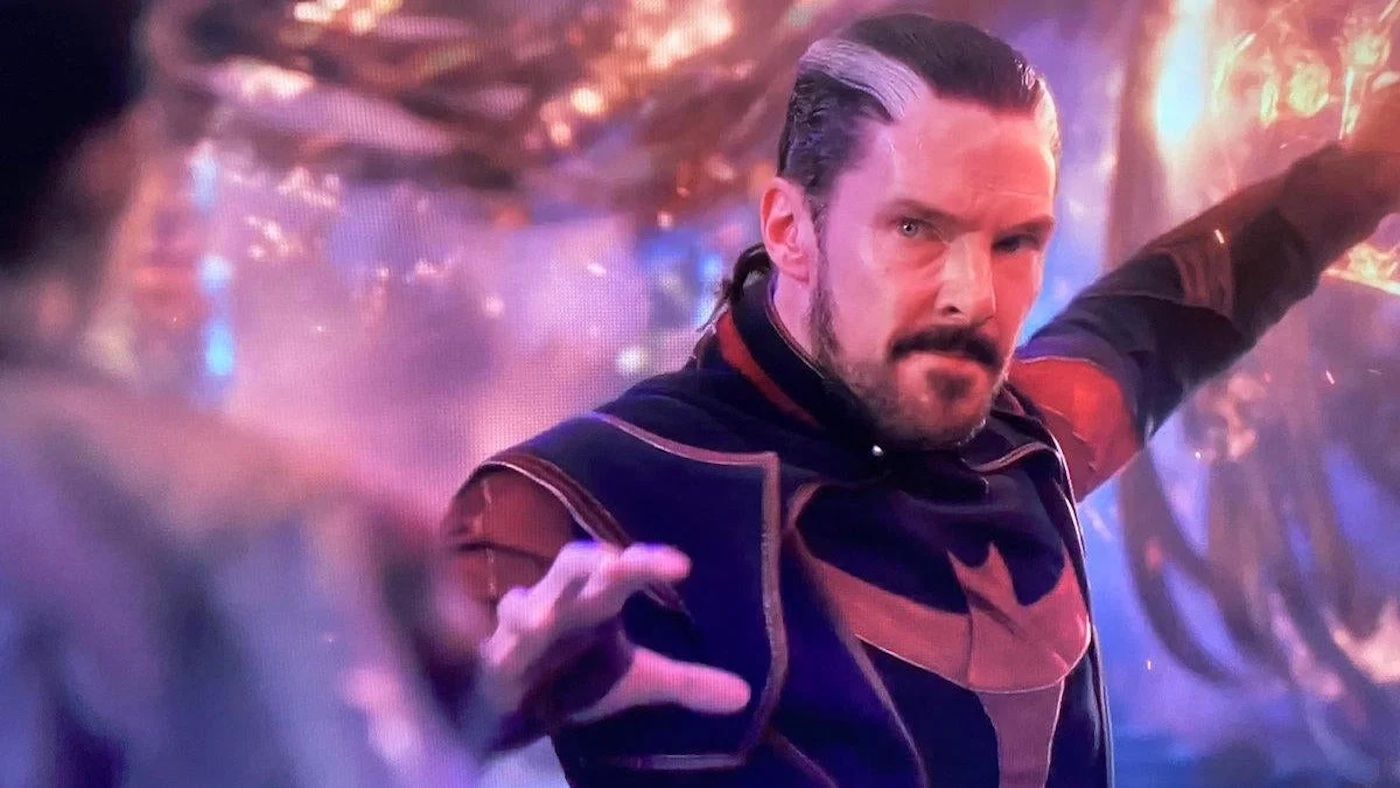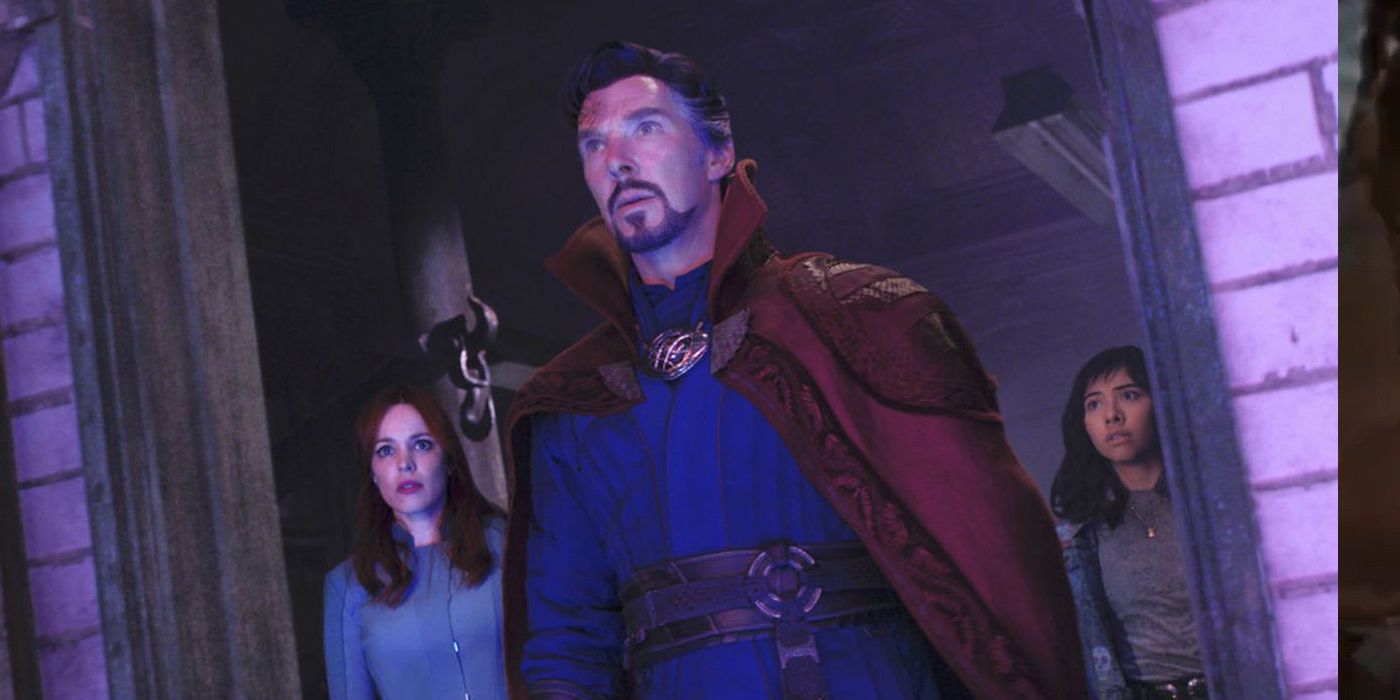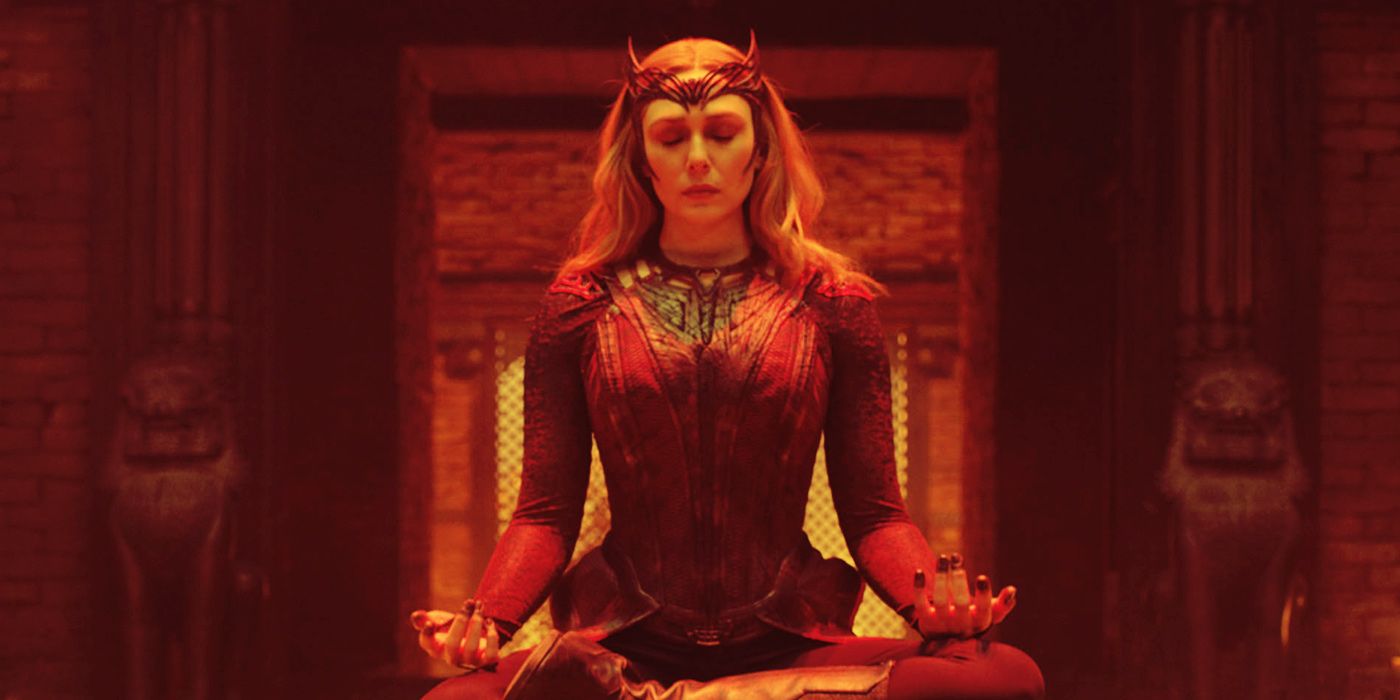Editor’s note: The following contains spoilers for Doctor Strange in the Multiverse of Madness.
Doctor Strange in the Multiverse of Madness is the result of a wonderfully weird marriage between the Marvel Cinematic Universe and the mind of director Sam Raimi, as it takes its titular character (played by Benedict Cumberbatch) on a wild journey where he’s forced to face past actions and decisions as well as alternate versions of himself from the multiverse. The adventure feels like a roller coaster ride looping its way through creatures, the Illuminati, a teenage girl with powers she can’t control, friends from the past, and a supernatural adversary with a very human grievance.
During this 1-on-1 interview with Collider, screenwriter Michael Waldron (who also recently served as head writer and executive producer on Marvel Studios’ Loki series for Disney+) talked about how the cuts to the movie were more about tightening things up and less about doing extensive surgery, how the Illuminati made its way into the story, never being daunted by the level of scares, that post-credits cameo, Pizza Poppa, the possible future of Wanda Maximoff (Elizabeth Olsen), and the evolution of the musical note battle. He also talked about where things are at with Season 2 of Loki.
Collider: Sam Raimi told us that his first cut of this film was more than two and a half hours, and then you guys did reshoots and the final cut is now at two hours and five minutes. Since it sounds like there are at least 30 minutes of the movie that was cut, what are the major differences between those cuts?
MICHAEL WALDRON: A lot of it was just tightening, is the truth. I never felt like we were doing extensive surgery on the movie. There are one or two sequences that got cut out. My cameo was shortened, sadly. But it was trimming for pacing because the movie is a ride, ultimately. I think that we all felt the movie operated best when it felt like a roller coaster that launched you out at 100 miles per hour, and never really let up.
I would agree with that. With the additional photography, how much was it Marvel saying that they needed you to add things like the Illuminati versus you guys saying, “This is a great place to add some cameos”?
WALDRON: The Illuminati was there from my very first draft. That was always there. And that was not Marvel mandated. That was me. It wasn’t even in my outline. I just basically felt like my second act was boring and I was like, “I need some crazy shit to happen,” so I wrote that sequence in. There were never any cameos mandated and the purpose of reshoots was never any of that. It was always, how can we clarify character? How can we strengthen these arcs? How can we make things clearer? That was the point of any reshoots or additional photography.
Was the Illuminati that you wrote in always the configuration that we see now? Was it the group of characters that we see, or were there more or less characters involved?
WALDRON: It was different. I think it had some crossover. There were many different versions of the Illuminati that came and went. I never would’ve dreamt the version that ended up on screen could actually be what we shot. That was the crazy thing. So, the fact that we got our absolute blue sky, this is the best possible lineup. This just feels like a miracle.
We heard that when you guys tested the initial cut of the film that some of the audience said it was too scary. Is that true? Is that something you heard as feedback?
WALDRON: I think some people always felt it was too scary. I don’t think we ever dialed back any of the scares. If we heard it was too scary, we were like, “Good.” I think that was the feeling. We were never really daunted by that.
How early on did you want Clea in the post-credits scene? Was that early on? Was that added in reshoots? How did that come about?
WALDRON: Look, she’s such a huge part of Doctor Strange’s comic book canon. Marvel had always talked about her being part of this film. I thought it was really important for Strange’s emotional throughline in this movie for us to actually close the loop on he and Christine Palmer, Rachel McAdams’ character. Once we did that and once he’s given that bit of wisdom from Christine to not be afraid of caring about someone, then it felt like the right time to introduce Clea, who in the comics is really his great love, I guess I would say.
Because that scene provides a moment that could foreshadow major storylines in the future, but it’s hard to know where or when or exactly how, how do you balance finding the right amount of tease with being too definitive because you don’t know how that could play out in the future?
WALDRON: That’s a good question. You try to not think of it that way. If you think about it that way, you’re probably dead. Honestly, I just try to think about it as another scene. It’s just, “Here’s a tease.” If was thinking about, “Where is a thrilling place for this adventure to go, that won’t box the next team into an inescapable corner?,” that felt pretty exciting. You just do that and follow your instincts.
I’m curious if Pizza Poppa was specifically written for Bruce Campbell, or did you write that role, and then Sam Raimi thought Bruce Campbell would be the perfect fit?
WALDRON: Pizza Poppa was specifically for Bruce Campbell. Yes, we always knew that was gonna be Bruce.
I can’t imagine anybody else doing that.
WALDRON: Yeah, it was so great. And the way that whole scene went, we knew it was gonna end with Strange casting the spell that made him beat himself up, which would give Bruce a lot of great physical comedy to do. But there was a lot of improv on the day. It was amazing to watch Sam and Bruce work together, but also Benedict [Cumberbatch], who was so game to get in and improv with those guys.
How are things going with Season 2 of Loki? What’s the status there? How is that coming along?
WALDRON: It’s great. It’s coming together. We’ve got great directors on it, like [Justin] Benson and [Aaron] Moorhead, who did amazing work on Moon Knight and who are great, cool horror directors in their own right. And then, Eric Martin, who was one of my writers on Season 1, is serving as the head writer this season. I’m still on as an executive producer and helping out as much as I can. It’s gonna be great.
Do you know when you start filming that?
WALDRON: I couldn’t say. I’d be tackled. This chair would drop out and I’d drop through the floor.
How would you compare the second season to the first season? Obviously, without revealing anything, is there a feeling to Season 2?
WALDRON: I think we just all hope that, in the same way, that the first season only felt worth doing because we had new ground to cover with the character and it felt like a subversion of expectations of what you might think you’d see in a Loki show, we wanna try and surprise audiences in the same way in Season 2.
Obviously, there are questions left at the end of Doctor Strange in the Multiverse of Madness, as far as Wanda’s future in the MCU. Did you guys have a lot of conversations about how up in the air to leave that? Do you feel like it’s enough of a question that she could return again in the future?
WALDRON: Look, a mountain falls on her, but she’s pretty powerful. I don’t know. Who do you think would win between Wanda and a mountain? That’s ultimately what we’re asking the audience to consider. I love the character of Wanda and I would love to see her again, and I guess we’ll see what happens.
My answer is to always bet on Wanda, no matter what the situation is.
WALDRON: Probably a sound bet.
How did the whole musical note battle sequence come about? Did you work with Danny Elfman on that? How did that evolve?
WALDRON: We did, yes. We wanted a fight that would feel worthy of two Doctor Stranges fighting one another. We talked about Doctor Strange and Thanos’ magic fight in Infinity War, and it needed to be something that felt that cool. And so, that idea for that music note fight came from Doug Lefler, who’s one of Sam’s longtime collaborators and storyboard artists. He was the storyboard artist on the first three Spider-Man movies. It was his idea, and then he collaborated with Danny and Janek Sirrs, our VFX supervisor. It was a real team effort to make that thing cool. I had nothing to do with that. It was all those guys making it amazing.
Doctor Strange in the Multiverse of Madness is now playing in theaters.

